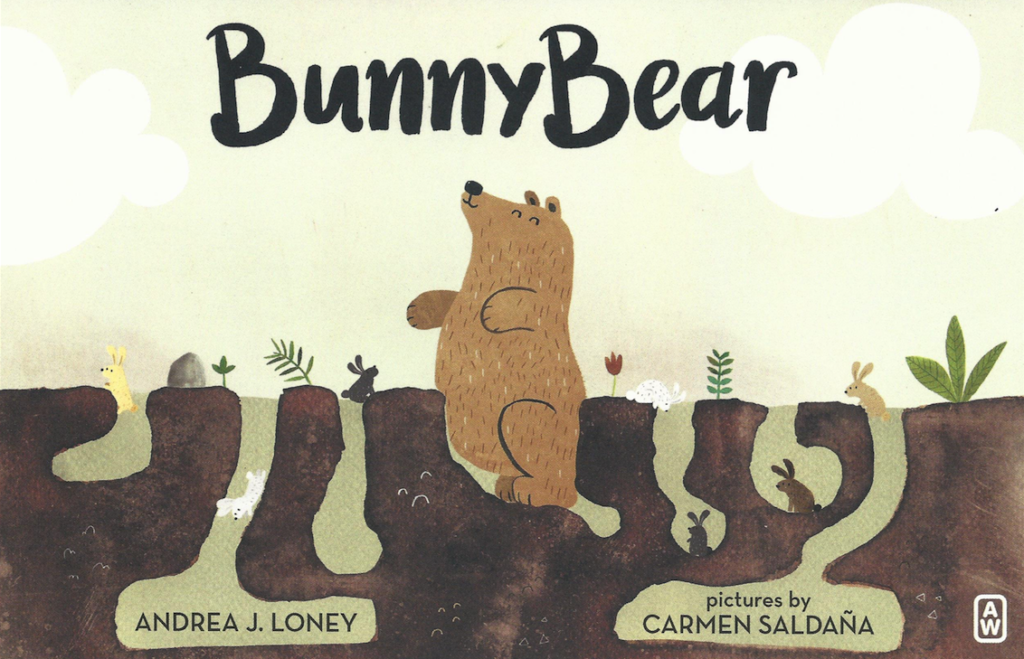
Bunnybear
by Andrea J. Loney
illustrated by Carmen Saldaña
Albert Whitman & Company
ISBN-13: 9780807509470
(NOW IN PAPERBACK)
Although Bunnybear was born a bear, he feels more like a bunny. He prefers bouncing in the thicket to tramping in the forest, and in his heart he’s fluffy and tiny, like a rabbit, instead of burly and loud, like a bear. The other bears don’t understand him, and neither do the bunnies. Will Bunnybear ever find a friend who likes him just the way he is?
Reviews
“In a story about sticking to what you know to be true, even if it goes against social norms, debut author Loney introduces a bear who feels most like himself when he’s doing the sorts of things that bunnies do: ‘He loved to bounce through the forest, wiggle his nose, and nibble on strawberries. It made him feel free and light and happy.’ Bunnybear’s fellow bears don’t understand him, nor do a warren of bunnies—except for one named Grizzlybun, who declares herself a bear. ‘I’m burly and loud and I eat whatever I want,’ she tells Bunnybear, who responds, ‘That certainly sounds like a bear to me.’ … But despite the lighthearted tone, Loney’s story has important things to say about identity and acceptance, and is valuable both as entertainment and a conversation-starter.” —Publishers Weekly
“A sweet story of friendship and acceptance. Whimsical, cheery illustrations tell the story of a bear who looks like most bears. But when he is alone, he bounces, wiggles his nose, and nibbles on strawberries. He calls himself Bunnybear. The other bears don’t understand him and deem him odd. So he leaves home and eventually finds himself looking down a rabbit hole. Even though they are “tiny and fluffy and bouncy, like Bunnybear’s heart,” the rabbits find him as odd as the bears did and tell him to leave. Alone and bewildered—he doesn’t feel like a bear, but he doesn’t look like a rabbit—he is at a loss. Then he meets a rabbit. Only this rabbit is more than a rabbit: she looks like a rabbit but feels like a bear—she is Grizzlybun! And so starts a friendship of two who look one way on the outside but feel another way on the inside. Unlike many stories of differentness in which the characters just want to fit in, here the characters are happy to be who they are—it is others who must come to accept them. … the message of being true to one’s nature is one many children need to hear. A nice addition to the identity and acceptance bookshelf.” —Kirkus
